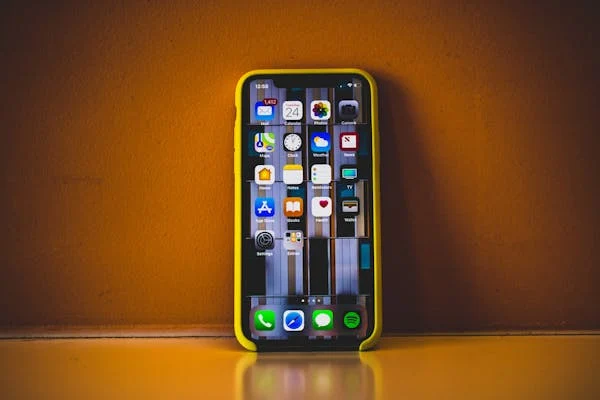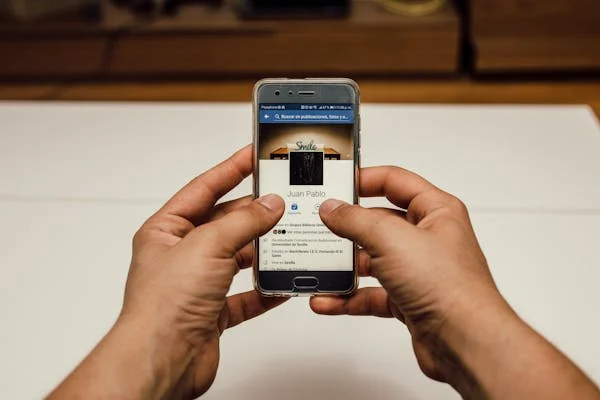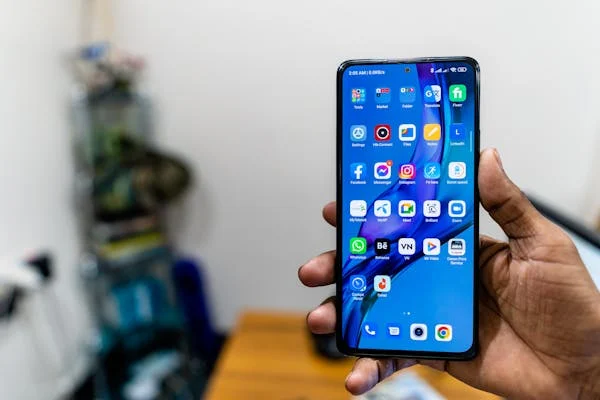Mobile Security in 2025: Protect Your Phone from Cyber Threats
In 2025, smartphones have become even more integrated into our daily lives, not just for communication but for managing finances, health, work, and personal data. While the convenience and capabilities of modern smartphones are undeniable, they’ve also become prime targets for cybercriminals. With an increase in sophisticated threats, mobile security has never been more important.
As technology evolves, so too do the tactics of cybercriminals, making it crucial to stay one step ahead. In this blog, we’ll explore the current landscape of mobile security, highlight the most common threats in 2025, and provide actionable tips to protect your device from cyber attacks.
The Growing Threat of Mobile Cybersecurity
Today, smartphones are essentially portable hubs of personal data—banking information, social media accounts, business communications, passwords, and more. This wealth of sensitive information makes them highly attractive to hackers. Whether it’s through phishing attacks, malicious apps, or even exploiting weaknesses in operating systems, cyber threats to mobile devices have grown exponentially in recent years.
Some of the most notable trends in mobile cybersecurity include:
- Ransomware: Cybercriminals lock your phone or its data and demand a ransom for access.
- Spyware and Malware: Malicious software that monitors or manipulates your phone, stealing sensitive data or tracking your activities.
- Phishing Attacks: Fraudulent attempts to trick users into revealing sensitive information via email, text, or social media.
- Sim Swapping: Attackers hijack your phone number to gain access to accounts and personal information.
- IoT Vulnerabilities: As more devices connect to the internet (smart home tech, wearables, etc.), your phone becomes a potential entry point for attacks across your entire ecosystem.
While many of these threats have been around for years, they’re becoming more advanced, automated, and harder to detect. As a result, mobile security in 2025 requires a proactive approach to ensure your device is protected from the latest cyber threats.
Top Mobile Security Threats in 2025
- Malicious Apps and Downloads
In 2025, malicious apps have evolved from simple annoyances to highly sophisticated threats. Cybercriminals often disguise malware as legitimate apps, tricking users into downloading them from app stores or third-party websites. These apps can track your personal information, steal your credentials, or even take control of your device.
How to Protect Yourself:
- Stick to official app stores like Google Play Store and Apple App Store. These platforms have more rigorous security protocols.
- Check app reviews and ratings before downloading, as well as the permissions an app requests.
- Regularly audit your installed apps and remove those you no longer use or trust.
- Phishing Attacks
Phishing scams continue to evolve, and in 2025, they’ve become more targeted and convincing. Attackers can use social engineering to craft personalized messages that trick you into revealing your login credentials, banking details, or other sensitive information. These attacks are often delivered via SMS (smishing), email, or social media.
How to Protect Yourself:
- Be cautious of unsolicited messages, especially those that ask for personal information.
- Double-check URLs in links you receive, ensuring they match the official websites of the organizations.
- Enable two-factor authentication (2FA) wherever possible to add an extra layer of security.
- Sim Swapping
In a SIM swap attack, cybercriminals trick your mobile carrier into transferring your phone number to a new SIM card. With control over your number, they can gain access to your online accounts that rely on phone-based verification, including banking apps and social media profiles.
How to Protect Yourself:
- Use strong, unique passwords for each account and enable 2FA using an authenticator app rather than SMS-based verification.
- Contact your mobile carrier to add an extra layer of security to your account, such as a PIN or password.
- Be cautious of phishing attempts from “official” sources asking for your personal information.
- Spyware and Stalkerware
Spyware, or stalkerware, refers to malicious apps designed to monitor your device without your knowledge. These apps can record your keystrokes, track your location, intercept calls and texts, and steal personal data. It’s a serious issue, especially for those at risk of being targeted by domestic abusers or stalkers.
How to Protect Yourself:
- Monitor your device for unusual behavior, such as slower performance, unexplained data usage, or unusual battery drain.
- Use security software that can detect spyware and malware.
- Check app permissions regularly, particularly for apps that request access to your camera, microphone, or location.
- Public Wi-Fi Vulnerabilities
Public Wi-Fi networks, whether in cafes, airports, or hotels, are notoriously insecure. Cybercriminals can intercept data on unprotected networks, making it easier to steal login credentials, credit card information, or personal files.
How to Protect Yourself:
- Avoid conducting sensitive activities (banking, shopping, etc.) over public Wi-Fi.
- Use a virtual private network (VPN) to encrypt your internet traffic and protect your data when on public networks.
- Turn off Wi-Fi when you’re not using it to avoid automatic connections to unsecured networks.
7 Tips to Strengthen Your Mobile Security in 2025
- Use a Strong Password and Biometric Security
Your phone’s lock screen should be secured with a strong password, PIN, or biometric authentication (fingerprint or face recognition). This adds a critical layer of protection in case your device is lost or stolen. - Enable Two-Factor Authentication (2FA)
Whenever possible, enable 2FA for your most important apps and services. This makes it significantly harder for attackers to access your accounts even if they manage to obtain your password. - Regularly Update Your Device and Apps
Software updates often contain security patches that fix vulnerabilities. Ensure your phone’s operating system and all apps are regularly updated to minimize security risks. - Install a Mobile Security App
Consider installing a trusted mobile security app that provides antivirus protection, anti-malware features, and secure browsing. Many of these apps offer real-time monitoring to catch threats as they arise. - Be Wary of Unsolicited Requests
Avoid clicking on links in unsolicited messages, whether from unknown numbers, email senders, or social media accounts. If you receive an unexpected message asking for personal information, verify the source before responding. - Backup Your Data
Regularly back up your data to cloud storage or an external device. In case your phone is compromised, you’ll have a secure copy of your important files. - Encrypt Your Data
Encryption makes your data unreadable without the proper key, ensuring that even if a hacker gains access to your device, they can’t view or steal your information. Enable full-device encryption in your phone’s settings.
Conclusion: Staying Safe in a Mobile-First World
As we move further into 2025, the importance of mobile security will continue to grow. With cyber threats becoming more sophisticated and widespread, it’s essential to take a proactive approach to protect your device and data. By being aware of the risks, implementing security best practices, and staying vigilant, you can safeguard your phone from the latest cyber threats.







